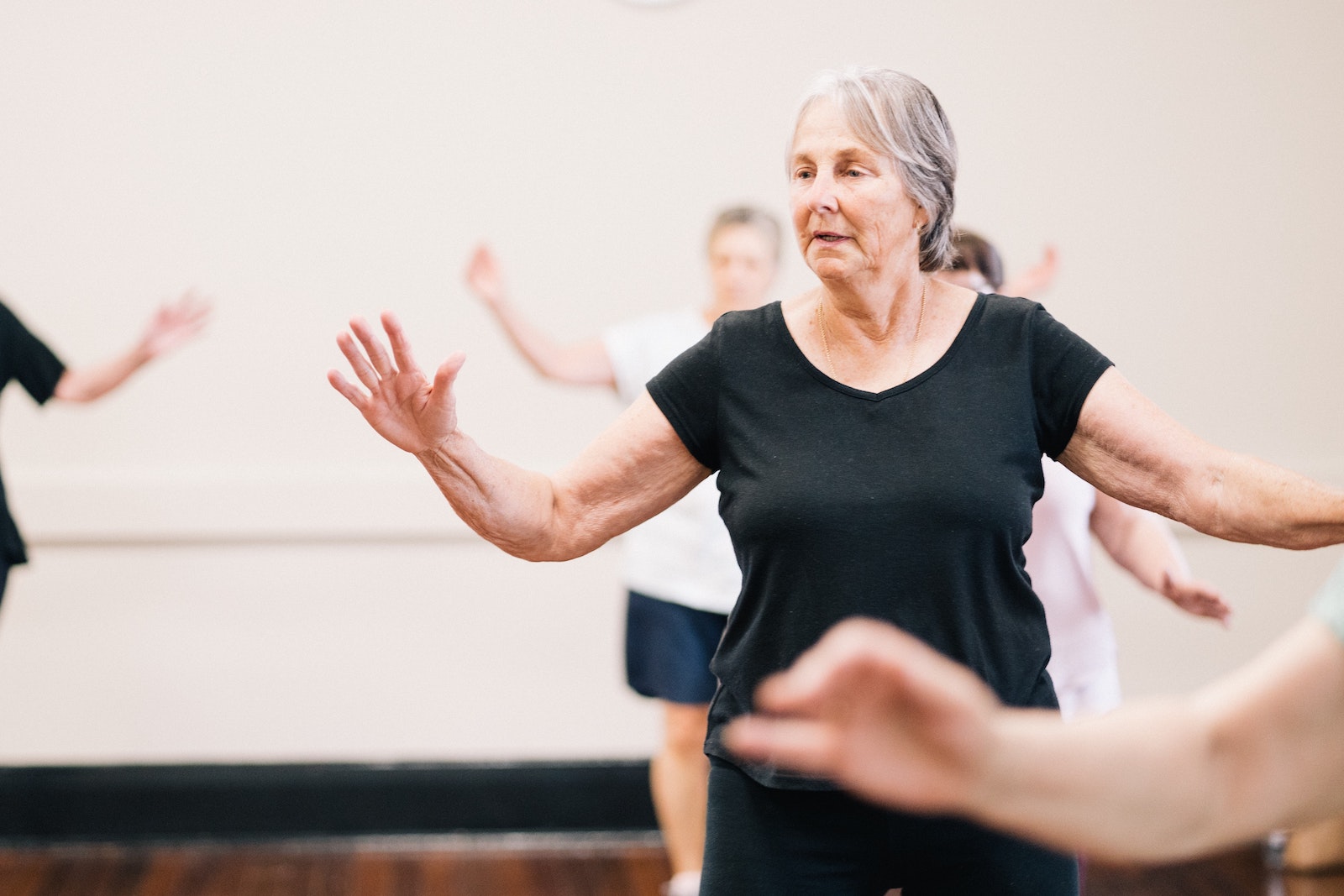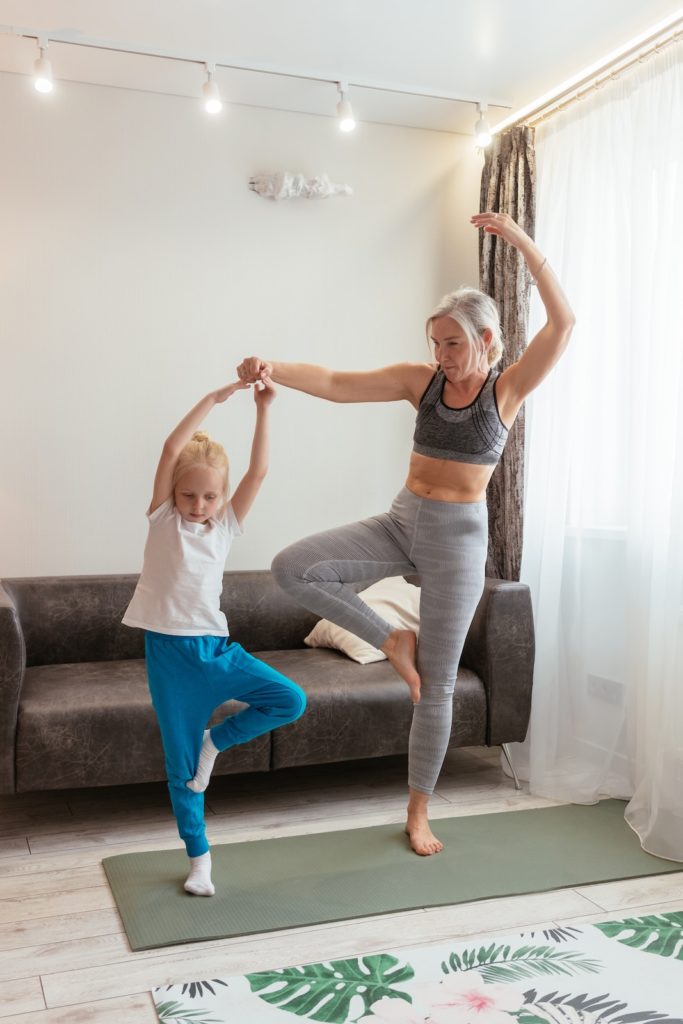Physical Therapy for Balance Issues

Dizzy? Unsteady? Falling? Can Physical Therapy Help?
Do you, or someone you know suffer from dizziness, poor balance, difficulty walking or falling? If so, consider seeking physical therapy for these balance issues. A physical therapist might just be the solution. The team at Synergy Physical Therapy in Spokane can help people of all ages improve their balance. We are balance and movement experts ready to help you reclaim your quality of life through hands-on care, patient education, and prescribed movement. In Washington State, you can contact a physical therapist directly to see if they can help you. You don’t need to wait for a referral.
A balance problem exists when a person has difficulty keeping a stable and upright body position. Balance problems can be scary, as they undermine your confidence in your ability to move around safely and increase risk of falling. Balance problems are more common in older adults, especially age 65 and older, and are a widespread reason they seek medical assistance. According to the CDC, “Every second of every day, an older adult (age 65+) suffers a fall in the U.S.—making falls the leading cause of injury and injury death in this age group. One out of four older adults will fall each year in the United States.”

The optimal time to seek physical therapy for balance issues is when you first begin to notice feeling unsteady or off balance. With appropriate intervention your balance can improve and falls can be prevented! Physical therapists are well-positioned to help you improve your balance. They’re movement experts who take into account the many bodily systems that influence your balance and will design an individualized plan to help you feel steady on your feet.
There are many potential causes of balance problems, including:
- Inner ear problems
- Age related changes
- Muscle weakness
- Neck pain/stiffness
- Decreased flexibility
- Certain medicines (like those for high blood pressure) Lack of physical activity
- Blood pressure – A sudden drop in blood pressure when a person sits or stands up can make a person feel dizzy or lightheaded. This may cause a person to faint and fall.
- Visual problems
- Other medical conditions associated with impaired balance:
- Stroke
- Arthritis
- Peripheral neuropathy Spinal cord injury Diabetes
- Multiple sclerosis
Physical Therapy for Balance Issues – The Big Picture
Balance disorders are complex. There are three bodily systems that work in harmony to maintain balance. Sensory signals from these systems are sent to the brain, where they are processed to help the body maintain steady vision, posture and balance. When there is a breakdown in this process, it can result in feelings of dizziness, unsteadiness, difficulty walking and performing usual activities, and even falling. Here’s a brief summary of these systems:
- Vestibular – The part of the inner ear responsible for balance is the vestibular system. Hence, inner ear problems affecting a person’s balance are called vestibular disorders. Feelings of dizziness, nausea, spinning/vertigo are often associated with impairment of the vestibular system. Vestibular disorders can occur from head injury, aging, infection or disease.
- Somatosensory – this includes the muscular system, and sensors of the nervous system that supply information about the body position in space and with movement (proprioception).
- Vision – Poor vision can result from age, eye tracking problems, or eye diseases.
At Synergy Healthcare in Spokane Valley, our expert physical therapists will perform a comprehensive assessment to determine the source of your balance problems, and create a custom treatment plan to help you recover and resume your favorite activities. Read on about how we treat each of these categories of balance problems. As always, don’t hesitate to contact our team with any questions.
1. Vestibular Disorders
Vestibular disorders can be treated with physical therapy. Vestibular disorders often come with the following symptoms:
- Vertigo (spinning or whirling sensation) Unsteadiness
- Dizziness
- Imbalance
- Tinnitus — ringing in the ears
- Feeling like the ground is moving
- Nausea
- Lightheadedness
How Does Vestibular Therapy Work?
Vestibular Rehab Therapy (VRT). This specialized therapy focuses on the nervous system, specifically the inner ear component of the nervous system. It is an exercise-based treatment program that helps your brain learn to use other senses, such as vision, to compensate for deficiencies in the vestibular system. Your body is resilient and can overcome balance issues over time by using your other body systems to share the load; vestibular therapy helps the body learn more quickly, shorten recovery time, and return to doing what you love.
Therapy for vestibular disorders involves the following approaches:
Habituation — Habituation exercise focuses on repeating specific movements and activities that provoke symptoms, which helps your body learn to ignore them resulting in less dizziness . This treatment approach is used for patients with dizziness while moving, changing positions, or reporting dizziness in visually stimulating situations.
Gaze stabilization — This treatment approach works on teaching the eyes to remain focused so you have clear vision during head movement. If a patient is dealing with vision problems when reading, looking around, or walking, gaze stabilization may be the most beneficial.
Balance training —During this treatment, your physical therapist may give you exercises to improve flexibility, strength and specific activities that safely challenge your balance. Balance training retrains your neuromuscular system to be able to move and perform daily tasks with less risk of falling. Balance training also reduces the fear of falling, allowing you to be more confident and active.
2. Balance Training
Whether from aging, injury or a disease process, a lack of strength in your legs or torso can contribute or cause balance problems and difficulties walking. Muscular weakness also increases the risk of falls, especially in older adults.. The good news is these falls are highly preventable with physical therapy!
You may benefit from balance training and strengthening if:
- You have difficulty walking/moving safely by yourself
- You have been injured in a fall or have a history of falling
- You have had a stroke, Parkinson’s disease or Multiple Sclerosis
- You are an athlete recovering from an injury You have had surgery
- You have vertigo or dizziness
How Does Balance Training Work?
Your physical therapist will guide you through specific treatment activities for balance issues to address their root cause, including lack of strength, lack of flexibility or impaired sensation in the lower extremities and core. Promoting balance and reducing the risk of falls starts with doing safe exercises prescribed by your therapist. These exercises will be tailored to your needs, goals, and favorite activities. You’ll be carefully guided on how to perform them safely and correctly to get the greatest benefit and prevent further injury. In addition, we offer movement-based therapies including Total Motion Release and Pilates which can also help you gently rebuild your strength and balance.
Examples of exercises in your balance retraining program may include:
- Walking Exercises
- Tightrope walks (not on a real tightrope)
- Chair leg raises
- Flamingo stands
- Calf Raises
- Leg Swings
- Gentle Yoga Poses
- Lunges
3. Vision
Your physical therapist will ask you about your vision and may do some vision and oculomotor testing to assess gaze stability and other aspects of your vision related to balance.
The importance of seeking Physical Therapy for Balance Issues
In conclusion, if you or your loved one has problems with balance, dizziness, difficulty walking, or has suffered a fall, please seek assistance early. Research reported in the Journal of Geriatric Orthopedic Surgical Rehabilitation has statistics to support the fact that falls will increase in occurrence after the initial fall. One study done in 2020, as reported in the journal of Geriatric Orthopedic Surgical Rehabilitation showed that “of 199 patients, 52 (26.1%) patients experienced one or more recurrent falls during the year after their initial fall, with half (n = 26, 50.0%) experiencing a recurrent fall within 90 days after their initial fall. Furthermore, the Center for Disease Control reports that “falling once doubles your chances of falling again”. So please don’t hesitate to seek assistance. The physical therapists at Synergy are here to help and willing to answer your questions. Give us a call today and get started on the path to better balance.


